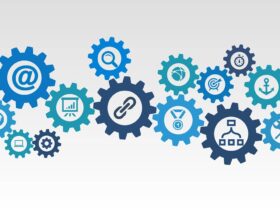Keeping control of employee access privileges in your network has long been regarded as a crucial tool in reinforcing security measures and preventing human errors that can lead to cyber-attacks. This approach, which has been utilized for decades, aims to restrict and monitor privileged access to sensitive data and systems within an organization.
However, despite this, studies continue to reveal a startling statistic – human error still contributes to a staggering 95% of cyber attacks. This finding highlights the need for a deeper understanding of the root causes behind these errors and the importance of addressing them effectively.
In the article below, we share some of the best tips to keep control of employee access privileges in your network that will ultimately contribute towards mitigating risks that can disrupt the security strategy of your business.
Monitor User’s Access Rights
Managers must ensure that employees are not given access to certain functions. Look at the data logged by users monthly to see if they are meeting the expectations for the job. When job functions are changed, it is important to review and adjust user access rights.
Organizations, in general, implement detective controls to identify anyone who has access to multiple applications that allow them to break the Segregation of Duties (SoD) rules. This reduces the risk of fraud or operational errors. They should also implement controls that prevent access to people who violate the policies.
It’s not possible to always achieve perfect SoD due to resource constraints. In this case, you may use compensating control to reduce the risk when an individual user is required to perform multiple duties. If you wonder what are compensating controls, it refers to alternative measures implemented to reduce risks when the primary control isn’t feasible or enough. These controls act as a backup plan, providing an additional layer of protection in situations where the primary control cannot be fully implemented or maintained.
Limit the Number of Admin Accounts
To maintain control over employee access privileges within your network, it is important to limit the number of admin accounts. Accounts with admin privileges can make changes to your network and start processes. They can also grant other users access. You will be able to determine which users should have admin account permissions, and which should not more easily.
You should also limit the number of accounts to just one or two. If you are managing a large group of people, you can give them special administrative roles that have limited access.
By doing so, you can effectively mitigate the risk of unauthorized access and potential security breaches.
Granting administrative privileges to only a select few individuals ensures that there is a clear chain of responsibility and accountability. This approach minimizes the chances of accidental or intentional misuse of sensitive information or system resources.
Having a limited number of admin accounts also simplifies the process of monitoring and managing access rights. It allows IT administrators to closely track and audit activities performed by those with elevated privileges, enhancing overall network security.
Control How Privileged Accounts Are Utilized
After determining who has elevated privileges, you can begin tracking the activity of these users. Tracking and monitoring privileged account activity will give you the chance to identify malicious or bad data handling before they become a problem.
Replay tools and session recording software give you insight into employee behavior, allowing you to track who performed what actions and when.
You can immediately address any issues that arise with your employees, and you can also identify loopholes within your access management system to fix them on time.
Train Users

Security awareness training for employees and organizations is essential. Even if your employees use their privileged access properly, they may still fall victim to phishing, malware, or social engineering.
A study shows that 84% of cyberattacks are caused by human error. Training employees is crucial in order to reduce the number of vulnerabilities. However, organizations need to invest in formal training supported by security experts.
You should also let your employees know that safety is a top priority and an integral part of their job.
Manage Data
Data is a vital part of any business as it allows companies to enhance processes and make informed decisions that lead to better performance. Data management and storage must be implemented by companies to protect data and allow only authorized users access.
A dataset may change many times throughout its lifetime. It is important to understand data and make it available to those who need it.
Data tracking tools help you understand metrics in datasets, organize data, and collect. It is not only helpful for organizations to understand who has access to which data but also helps them gain valuable insights.
Final Thoughts
Maintaining control over employee access privileges in your network is crucial for ensuring the security and integrity of your organization’s data and systems. By implementing the strong control measures outlined above, you can minimize the risk of unauthorized access and potential breaches.










FIND US ON SOCIALS